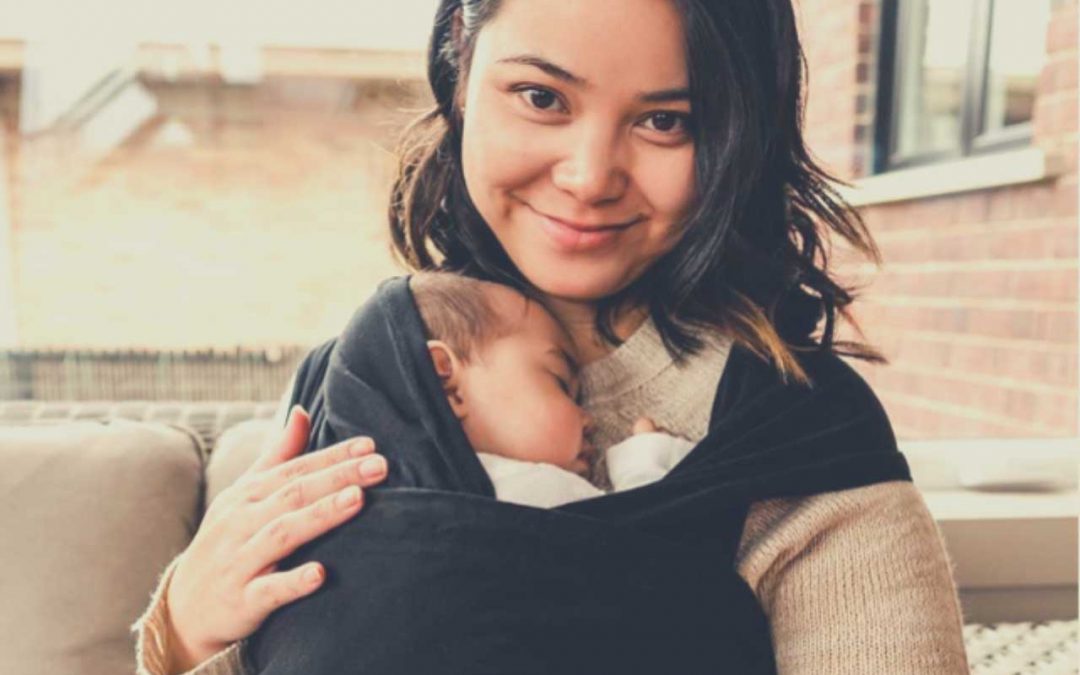Babywearing has been adopted by many of the human population across the globe for centuries for its convenient benefit of baby transportation. Made from animal skin, leather ties, and fur this custom of wearing your baby has been true to the nature of the human carrier gene. Humans are bred to carry our offspring.
This babywearing tradition was cut off mainly in the west during the industrial era and made a swift come back in the 80s. Since then, multiple products have entered the marketplace to satisfy the growing demand for strapping your baby close to your chest and back.
What is babywearing?
Babywearing is the practice of carrying the baby in a wrap, sling or carrier device that allows the caregiver to go about their day with free hands while the baby received the engagement from the adult.
This nurturing practise of babywearing benefits both the parent and the baby, promoting attachment, maternal and paternal bonding, and supporting easy breastfeeding.
This also allows the parents to continue with their day to day activities whilst staying in close proximity to their baby.
Other health benefits of babywearig include for some mothers: aiding with postpartum depression and other postpartum psychosomatic conditions that some mothers experience.
What are the benefits of babywearing?
The benefits of babywearing are many, but there is the core emotional, physical and social development of the baby and the caregiver that we will break down in this article.
Babies that are carried cry less
Less crying is beneficial to both the caregiver and the child. This is because the cuddle position of the carrier helps create a relaxing experience for the baby. And the rocking motion that occurs when the caregiver is in the motion also promotes a safe and soothing environment for the baby.
Easy tummy time
Ask any baby about tummy time, and they will coo that they appreciate it very much. The wrapped baby on a body mimics as tummy time for the baby, promoting strong neck and shoulder muscles aiding in developing motor skills.
Social development for your baby
Babywearing can help develop your baby’s social and cognitive skills. The closeness the baby has to your day to day life enhances his or her ability to interact with your shared environment. This is possible through the practice of babywearing, moreover, the chances of the parent picking up on the baby’s cue and changes in moods can also promote a better maternal/paternal bond and the child’s overall wellbeing.
Emotional development and bonding
According to a study conducted by Columbia University, it was found that the emotional bond developed between the parent and the child during the practise of babywearing is likely to be stronger than babies that aren’t physically tended to.
Bonding during early childhood is paramount for the baby’s overall ability to form attachments in their adult life. Babies bond and form attachments using multiple senses including touch, seeing, imitating and hearing.
Stimulates breast milk production for breastfeeding mothers
As most breastfeeding mothers are aware of the close proximity of the baby can stimulate an increased supply in milk production. Babywearing offers consistent skin to skin contact between the mother and the baby boosting oxytocin levels in the mother, helping aid the production of breast milk.
Choosing your sling?
Choosing the right babywearing wrap, sling or carrier can be dependent on the baby’s stage of development.
Babywearing for newborns – up to 5 months
During this time, the baby is the most physically fragile as they are working with their environment to strengthen their spine, neck strength, shoulder and back strength.
The neck of most babies are strengthened sufficiently around 4 months, so the soft wraps are perfect up until this stage of neck strength is developed.
Soft slings and wraps like baby k’tan are the best options for newborns as it offers the close swaddle like babywearing. Along with the added convenience of breastfeeding more frequently or as needed.
Babywearing for 5 to 18 months
After strength has formed in the neck for most babies, parents can opt for a stronger carrier option as the stage of staying upright is more suited for this stage of infantry.
Choices from the Ergobaby and Baby Bjorn range are firm enough for the baby to sit upright, supportive and soft enough to still offer the snuggly feel.
Babywearing for 18 to 36 months
At this stage, your baby has more energy than you and the babywearing is the break they will need to get a much-needed nap in.
However, this is a stage where your child can weigh anywhere from 10 – 20 kgs and that will require you to find an effective way to distribute the weight to avoid any back injuries. A more stable carrier from the Tula or Hug a bub range is ideal for heavier babies.
When to stop babywearing?
Ideally, you want to stop babywearing when the toddler is too heavy for you to carry, or it feels unsafe to do so. This can be anywhere from when your child weighs over 20 kgs or you have new interactions that don’t require the babywearing component to bond.
Where to get your baby carrier?
Babyroad is an online baby store with a physical store located in Perth, WA. Offering baby carriers, slings and wraps for all stages of babywearing, the friendly staff can help you pick out the best option tailored to you and your baby. Alternatively, you can jump online and get your very own babywearing device and carry on.




